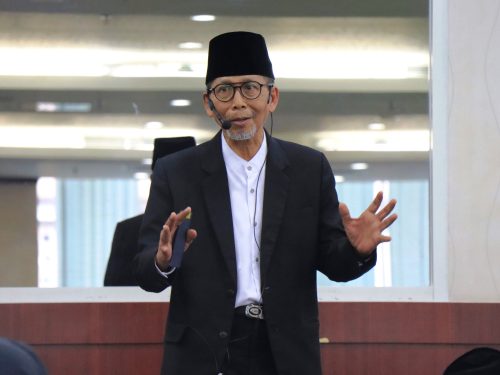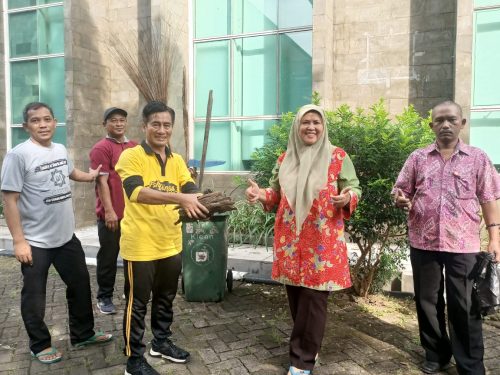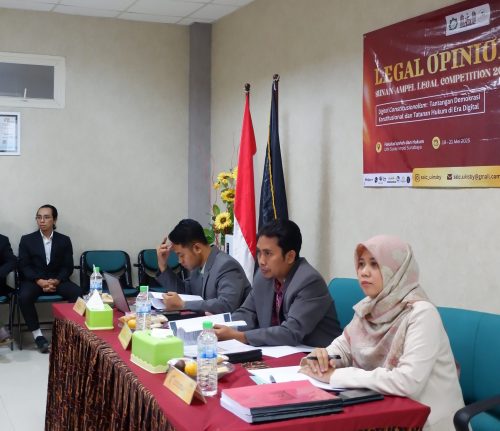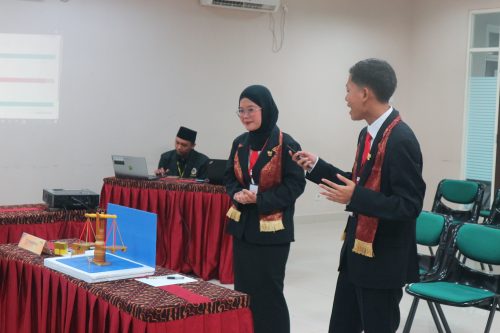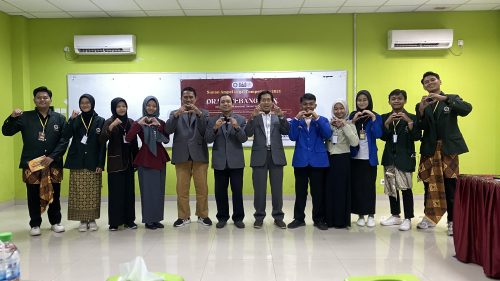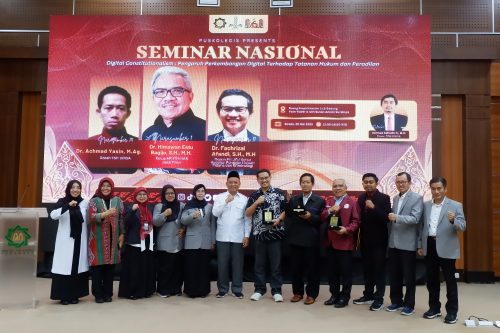Campus as a Second Home
(Series 1).
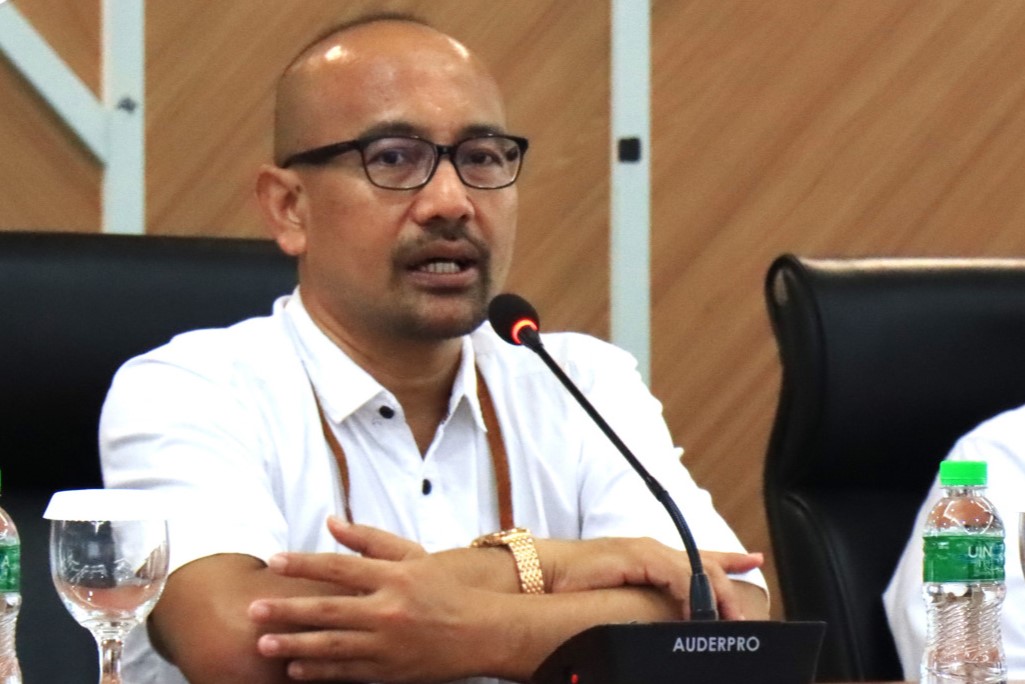
by: Prof. Akh. Muzakki, M.Ag, Grad.Dip.SEA, M.Phil, Ph.D
Rektor UIN Sunan Ampel Surabaya
Home is where the heart is. “Rumah adalah tempat hati bersemayam. Tempat hati mendapatkan ketenangan. Tempat hati meraih kedamaian. Tempat hati menemukan kesejukan.” That’s a cool quote about the essence of home. Safety and comfort are its indicators. Tranquility, peace, and coolness arise from that safety and comfort. At home, people will experience that sense of safety and comfort. The word “heart” symbolizes it. When that safety and comfort are lost, that’s when the concept of home collapses. When tranquility, peace, and coolness disappear, at that moment, home only becomes a memory.
That’s why when someone feels comfortable, they are said to be in an “at-home” situation. The Arab people refer to this at-home feeling as “sakinah.” That’s why in Western tradition, returning home is called “homecoming.” No matter how far one goes, there is a longing to return home. No matter how busy the activities, there is a need to go back home. And no matter how high the tasks at work are performed, there is a need to return home as an ideal place. That’s the concept of home that everyone longs for in life.
Home is indeed different from a house. Essentially, they both mean a residence. However, a house refers to the physical building. For example, a “luxurious house” means a luxurious home, referring to a physically magnificent building, designed grandly, situated on a spacious piece of land that brings relief. Its ornaments are not like those of an ordinary house. Of course, the expensive price can be expected from the start. Visually, its appearance is admirable, luxurious, and prideful. Anyone would be pleased to have it, even though desires don’t always align with reality due to limited financial means.
People can buy a house, but not everyone can have a home. Money can lead someone to own a house, but not everyone can obtain a home. Wealth can make a house possible in ownership, but it doesn’t always have the power to create a home within one’s embrace. People can live in a luxurious house, but they don’t always manage to obtain a home within it. That’s why a home is not always synonymous with a house. Indeed, a house can only be owned by someone with money, but a home can belong to anyone. Like the famous saying “baiti jannati,” a noble prophecy. “Home sweet home” is its translation. It can be obtained by anyone without limitations.
To realize a home in life, a sense of safety and comfort must be the experience of every individual within it. And indeed, the initial context is a home as a dwelling place. However, the concept of home can extend to any context, any place of interaction and socialization. The goal is to align all these places with home in terms of a situation that is suitable for dwelling. Characterized by the presence of safety and comfort. Tranquility, peace, and coolness are its consequences. That’s why the concept of a second home can arise for any context of a processing place.
The emergence of the concept of a second home, especially applies to places where a human spends a lot of time. Because much time is spent there, the place should be conducive to personal growth with all the potential one possesses. Safety and comfort are the most fundamental measures for realizing the essence of the intended second home. It’s truly regrettable if a place that serves as a point of interaction and socialization cannot become a second home because it fails to be a fertile ground for the growth of the required safety and comfort. For the realization of individual potentials in all their diversity.
A university campus can be an example of one of the places mentioned earlier. A campus is the place most used by students to spend time in the early stages of their adult lives. The same applies to the staff, lecturers, and educational personnel. Therefore, the campus should rightfully become a second home for them. The campus should be the most conducive place for the development of students and staff. The measure of safety and comfort should be a strong principle in organizing all processes that occur within it. Not only in lecture rooms limited by buildings of a certain square meter area but in all spaces, both physical and virtual.
As a translation of the above principle, the campus should be a field of positive and noble life experiences. Because such conditions are highly needed for the creation of excellent human resources. For both men and women, everyone should be facilitated equally. Not limited to male individuals alone but especially for women who spend a lot of their lives there, including staff and female students. They deserve to receive treatment and facilities more than what is given to male residents of the campus. All of this is to process and become meaningful individuals in the midst of the dominance of public spaces by men over women.
In the context of realizing the campus as the second home above, the advice of John Dewey is important to ponder. It goes like this: “Education is not preparation for life; education is life itself. Education, therefore, is a process of living and not a preparation for future living.” His advice essentially encourages all of us, including the realization of the campus as the second home. The substance is to provide a positive life experience to everyone within it, especially students.
Therefore, the campus is important not only as a stage for preparing the future lives of all individuals within it but also as a process of life itself for everyone. Thus, the organization of education on campus must be made as comfortable as possible, as comfortable as experiencing life at home, within the fundamental spirit of education. Therefore, the campus should be and simultaneously provide life. The campus is worthy to become the field for the growth of life, as good as at home or even better. When higher education institutions can realize the principle of “the campus as the second home,” the campus will soon become life itself, not just preparation for the lives of its residents.
This is where the campus must be particularly friendly to women. This is because they are the weaker beings, often subjected to unrepentant structures of oppression and inequality. Therefore, the campus should be the seedbed of positive values and practices for women’s lives. This is where important regulations are made, built on the awaited principle of positive affirmation. To regulate and ensure the campus as the second home for women, both employees and students.
With the assurance of the campus as the second home, female employees and students can feel comfortable in their daily activities. They can feel protected while undergoing the process of becoming proud individuals. Not only safe and protected from violent and physical practices, for example, but also as fertile ground for them to grow and live good and desirable lives. All of this can be obtained on the campus where they are currently undergoing their processes. And that’s why they deserve a good life within it.
For the above purposes, all higher education institutions are very appropriate to consider the best design for the concept of the campus as the second home. This is because the campus has many advantages. Even as a second home, the campus has several comparative advantages over a regular home. The campus is synonymous with various knowledge, a place where people acquire and produce knowledge. Even knowledge itself is processed and produced on the campus through the integration scheme of education, research, and community service.
Therefore, if the campus has many theoretical frameworks and practical instruments to develop the concept of the “second home,” it is quite reasonable. And that is what should become the face of the campus. Rich in knowledge. Abundant in theoretical frameworks. Complete with various virtues. Therefore, the development of the concept of the “campus as the second home” should naturally be equipped with various knowledge, theories, and virtues. That’s why it is very ironic if the campus fails to become the second home.
The failure of the campus as the second home can be seen from striking indicators. If violence spreads within it, then the campus fails to become the second home. If vulnerability becomes a significant image of the hearts and feelings of individuals within it, then the campus fails to become the second home. If female students experience verbal, physical, and even sexual violence, then the campus fails to become the second home. If students receive rough treatment, then the campus fails to become the second home. And it’s important to note: perpetrators of various forms of violence may be among fellow students. Or it could also be employees towards students. Or even students towards employees. And employees in this context can be lecturers or educational staff.
Moreover, if a sense of safety becomes a foreign commodity on campus, then the campus has failed to become the second home. If inner peace and tranquility become rare to obtain, then the campus has failed to become the second home. All of this is important to note as easy-to-remember signals to affirm the campus as a place that is safe and comfortable for anyone within it. That is the concrete measure of the concept of the campus as the second home. All of this is because the campus is life itself. The campus must provide the best positive experiences for all its residents.
Remember: The campus is the second home! Not the second boarding house! The campus is not a second boarding house. The last point is important to mention to maintain the clarity of the concept of the campus as the second home with measures of safety and comfort within it. Also, the campus as the second home must be emphasized to distance the campus from momentary interests that are not equally educational for both men and women within it. Without any pretense towards the concept of boarding houses, the campus should not be a temporary residence. Unless there are special facilities, such as dormitories and boarding schools within it. All of this is to maintain the idealization of the campus as the second home, which includes providing the most comfortable and safest place for personal growth.
It is urgent for campuses in Indonesia to become the second home for those who spend half of their daily time or half of their life stages there, from employees to students. Without discrimination within it. And indeed, everything cannot be achieved instantly. It cannot be magical. It cannot be sudden. It requires a process. It requires firm steps to move it. It requires measured efforts to realize it.
But strong commitment indicates a positive trend. The birth of regulations to ensure safety and comfort for every resident is a form of commitment to realizing the campus as the second home. The implementation of good facilitation based on the principles of safety and comfort for both students and employees is a progressive step towards the mentioned commitment. No goodness grows in the absence of safety and discomfort in public spaces. And that is why the campus as the second home is an answer that needs to be nurtured.

